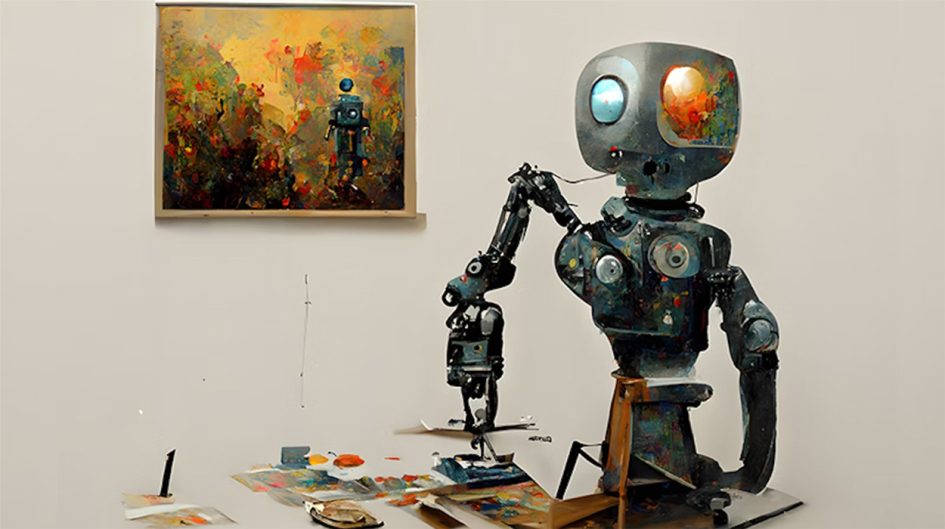Two friends sitting in a comic-themed café, one holding a coffee cup and the other holding a book or robot samurais, from the most basic pictures to weirdly fun pictures going viral on social media platforms., AI art can develop it. Just by typing a few lines in an AI Art generator, it will generate pictures within seconds. What if it has to be in Van Gogh style? AI art has got you covered. Most pictures AI generates are eye-catching and unique, meeting all fancy and dreamy conceptions. It turns imagination into reality by converting text into art and producing photographs within seconds.
Nowadays we do most of our tasks with computers. The latest technologies have replaced many manual workers but also improved the economy. However, what’s concerning is that many marketing and advertising companies are additionally relying on AI art for creative services, calling into question the creativity of designers and artists. This leaves many artists concerned about the future of their careers and whether artificial intelligence could ultimately replace them.
While AI art is predominantly used for fun and entertainment, it also has the potential to produce amazing images without the need for professional artists. It can even mimic the styles of old and famous artworks, allowing you to create exactly what you desire. However, despite AI’s creativity, it lacks some details. The model is fed with thousands of random images and trained to combine the desired images to create art. In a few cases, the images are very generic. For example, the images might miss details on the face when asked to produce a photo with a woman on it. These bugs need to be fixed so that users can rely on the art generators in the long run.
Although AI art may provide a few minutes of fun for most users, the blurring of creative and ethical boundaries has many artists railing against the method. Given the ongoing debate over whether AI art can be considered authentic, copyright infringement is one such primary problem. The style of many artists is copied without their permission. Even when creating artwork, the source of images is often unknown causing further discontent.
Fake images that go viral on social media platforms are only sometimes funny. A few crossovers or collages can be funny to us, but they can be offensive to others. It could also be risky, as someone could be accused of a crime they didn’t commit. Rumors based on fake photos of public figures or celebrities also defame them and affect their career and social standing. Brandee Barker, an activist on Twitter, also questioned why AI art producers perpetuate misogyny by taking the gendered features to an extreme.
Will AI art take over artists? In my opinion, your personality and determination make an artwork original. So, AI can never replace that. Whatever form it takes, let it be a sculpture, a performance, a piece of writing, a song, or an image, true art is more about the process than the final piece. Art is a way of displaying your emotions and experiences, but if we reduce this process to generating art based on simple text, where is the fun and essence? [TK1] While AI may be fast and creative in developing images, it cannot replace the decision-making process that plays a crucial role in art.
The impact of AI imaging could affect everything. We are still in the early stages of using AI, and there are differing opinions on its place in the creative process. Given the ethical questions raised against it by many, how it will work has yet to be defined. AI can be a creative partner in design for artists who are interested. We may even see a revival and appreciation of traditional art forms as industrialization gives more and more value to handcrafted work.



Leave a Reply